Section II - Performance Tests,
Synthetic -
In this section of testing we cover the synthetics. These are tests that run a scripted sequence of internal APIs or that use another installed application to perform a series of scripted events. They are great in that they can provide reproducible results across various platforms. On the down side, synthetic tests can be fooled with driver tweaks and optimizations. In some cases it is necessary to rename the .exe file to something generic to discover if this is the case. In any event when this is needed (when a test shows a drastic difference in performance over the renamed exe) we will note this and show both results for comparison.
PCMark7 -
PCMark7 is the latest general performance test from FutureMark. As each generation of this benchmark has evolved and developed we have watched them add more and more realistic tests to this suite. With this generation we find more media tests, (audio and video transcoding) moving of large files, multiple web page rendering, and much more (the even added DX10 gaming). We use the Overall Performance and Common Usage suites in our testing.
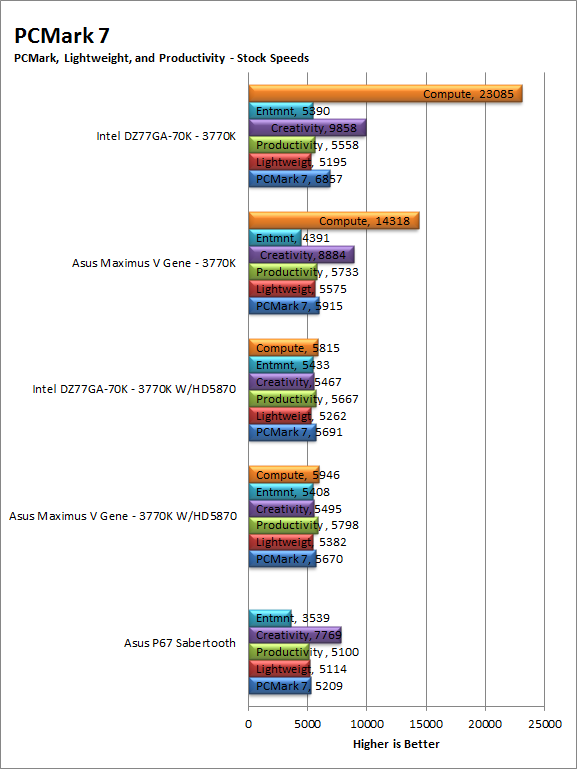
The Asus Maximus V Gene is right behind the Intel Desktop board (the DZ77GA-70K) at every turn. We can also see that Intel scores much higher in the Computation and creativity scores when only running the GMA 4000. This was unexpected in many ways, but also you have to figure that Intel might know what they are doing and set things up right. Still we can see that the combination of the Gene and Ivy Bridge should more than cover you for most general computing and do very well with anything that requires complex computations.
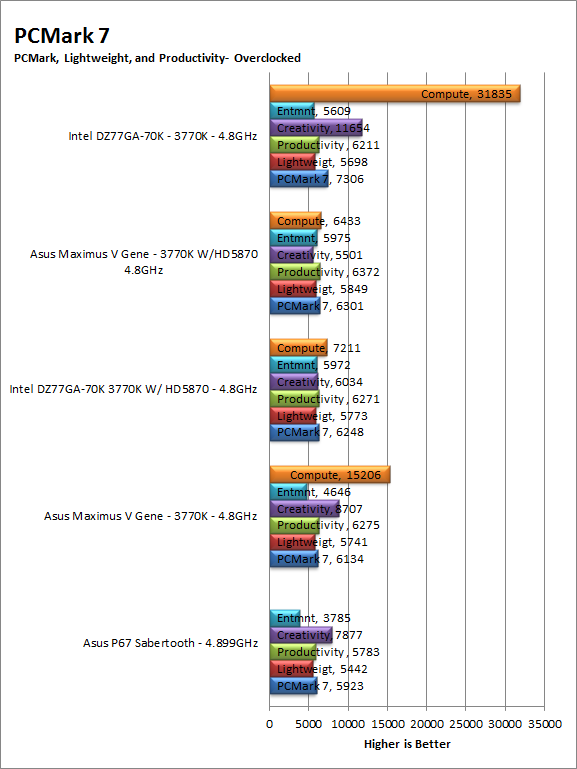
3DMark 11 -
3DMark 11 is the other Futuremark test that we run on our motherboards. This test simulates the typical tasks that a GPU (and system) would have to perform to provide you with a good gaming experience. It is based on the DX9, DX10 and DX11 engines but can only be installed on Windows Vista or later. The suite of tests covers DX9, DX10, and of course DX11 rendering; it also covers AI computations and physics. That’s right I said Physics the latest version of 3DMark uses a Havok physics engine. This removes the advantage that nVidia had with 3DMark Vantage.
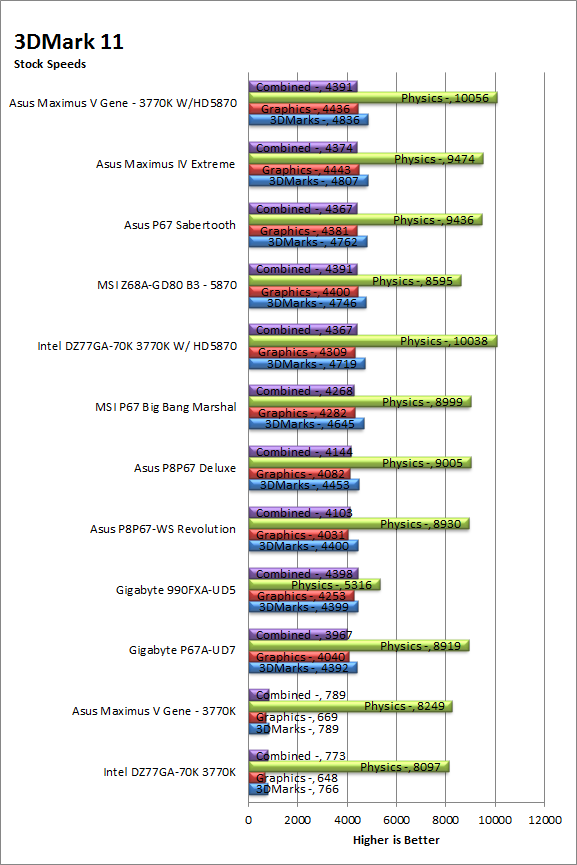
With 3DMark11 the Gene is back on top at stock speeds. We see it top out the Intel DZ77GA-70K when running only the GMA4000 by 23 points. This is a nice thing to see. When we drop in our HD5870 it manages to sneak past all of the others. During our overclocked tests it again came out on top for the GMA 4000, but did not scale as well with the HD 5870. This is good for stock gaming, but we have a feeling that we might see frame rates drop when overclocked.
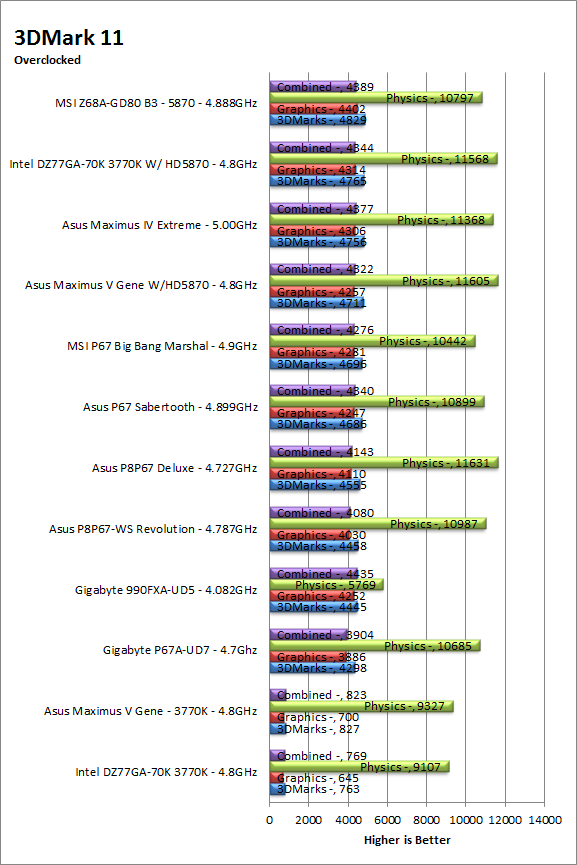
HyperPi 0.99b -
HyperPi is a front end application that allows you to easily run multiple instances of the SuperPi application. SuperPi, for those that are not familiar with it, is an application that measures the time it takes to calculate the number Pi out to as many as 32 million places. This calculation is then checked and run multiple times (up to 24 for a 32M run). This test stresses the CPU, Memory and HDD as data is handed off between the three. If there is a weak link, HyperPi will show it. For our testing we run the 32M test on as many cores (and threads) as the CPU has available. The slowest CPU time is then recorded.
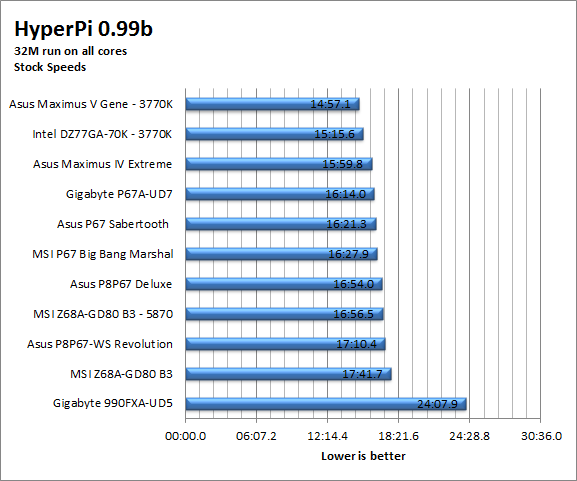
The Maximus V Gene can certainly run some pretty fast calculations. This is even though the 3770K does not have the same memory bandwidth we saw with Sandy Bridge and the 2600K. Unfortunately HyperPi did not scale well with our overclocking. The times decreased over a full minute, but the drop was not as much as other motherboards running Sandy Bridge.
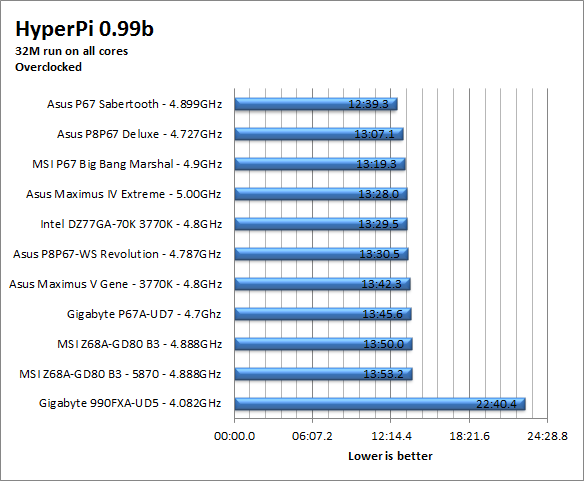
Cinebench R11.5 -
Cinebench R11.5 is the 11th release of Maxon’s rendering test. This test is based off of the Cinema 4D engine, which is one of the industry standard tools for digital animation. It is a powerful product with many different modules that can be “plugged” into it to increase its effectiveness. With Cinebench you get to see how your computer would do using this application. There are two tests; one tests the CPU’s ability to render an image across multiple cores or threads. The other tests your systems ability to handle OpenGL based rendering.
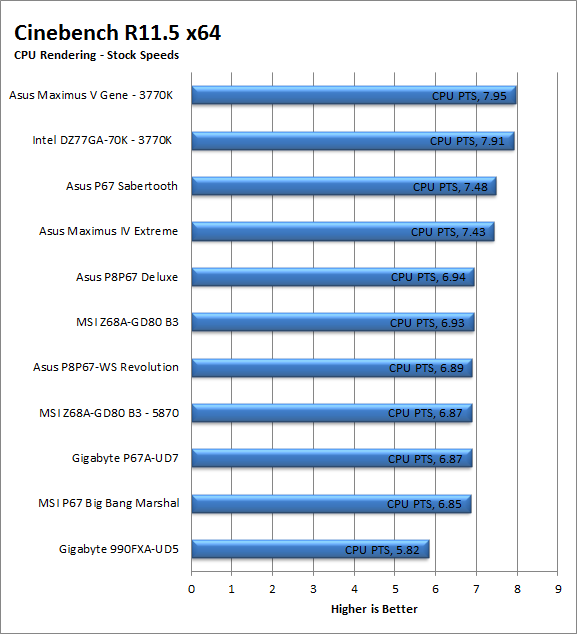
The Maximus V Gene was able to push through the CPU rendering test in Cinebench without any problems it pulled off the high score in our stock testing group and still managed a very respectable showing when overclocked only losing to the 5GHz 2600K on the Maximus IV Extreme.
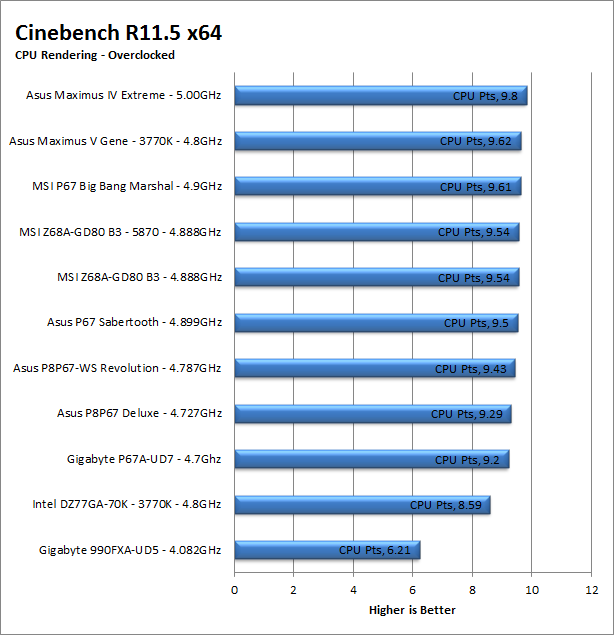
In OpenGL rendering the GMA 4000 was not so spectacular, but then again it is not intended to be. Still as far as IGPs go when the GMA 4000 was on the Maximus V Gene it managed to outperform all of the others.
| Cinebench R11.5 OpenGL Stock | Cinebench R11.5 OpenGL Overclocked |
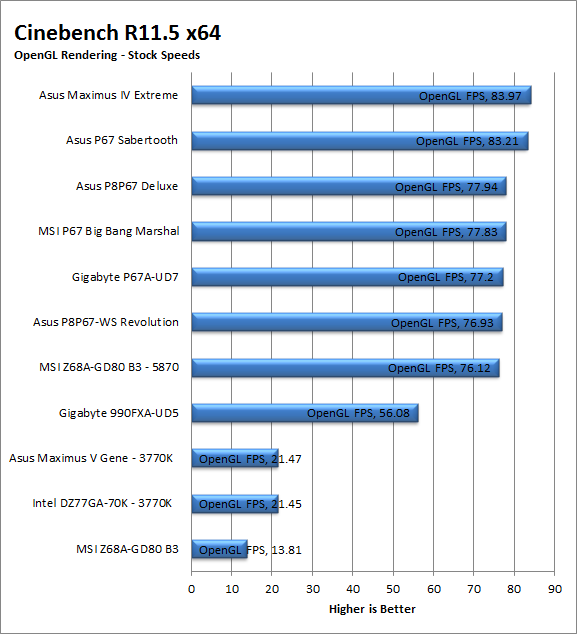 |
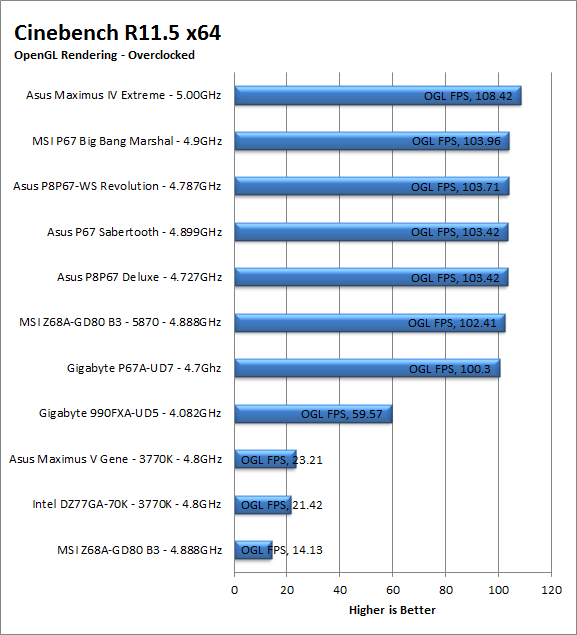 |

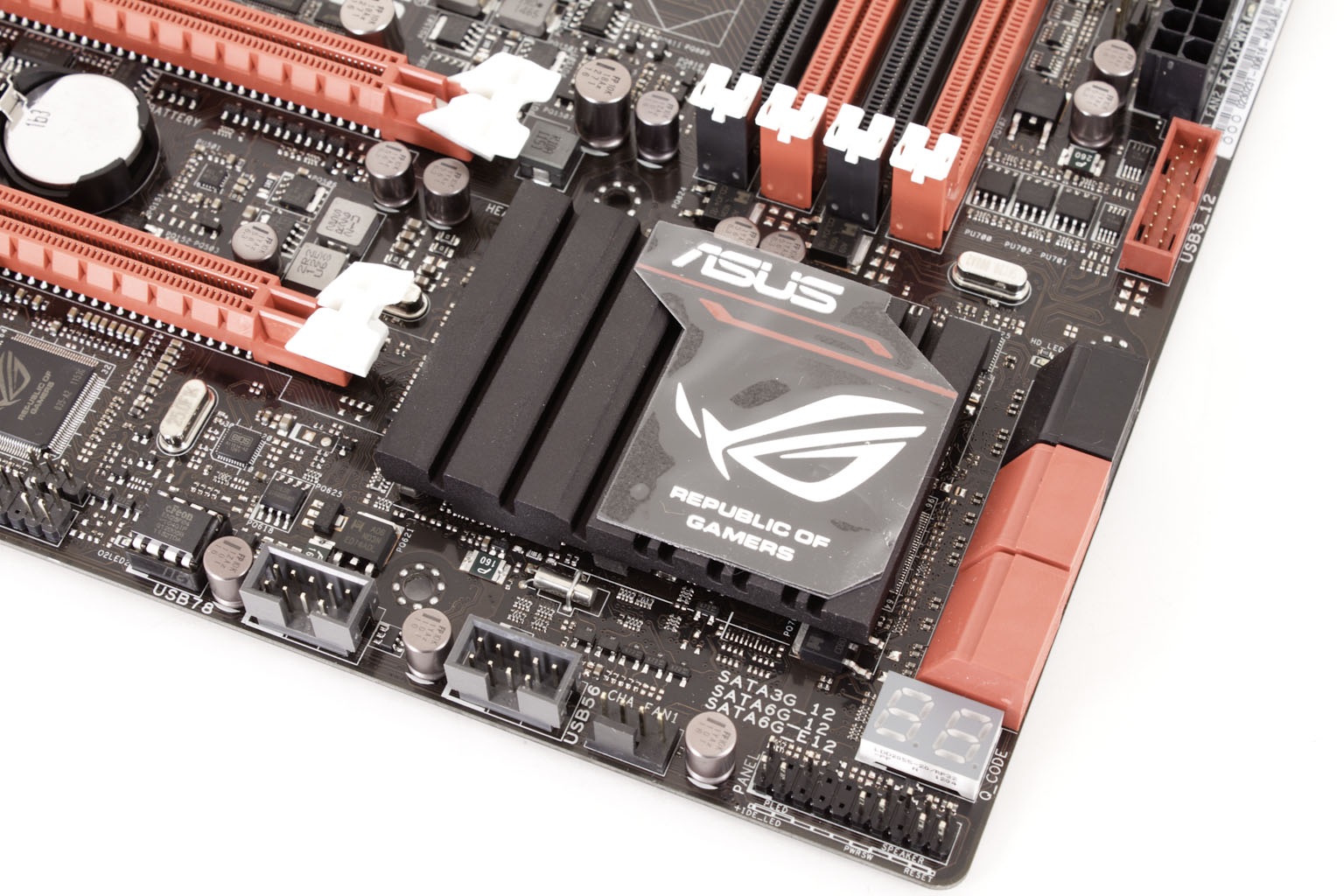 After seeing what new features Asus is bringing to the table with the
After seeing what new features Asus is bringing to the table with the 

